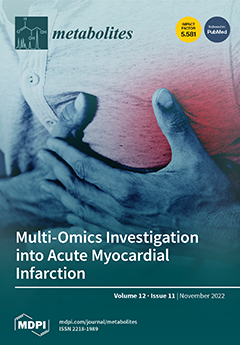The generation of free radicals in body causes oxidative stress and consequently different metabolic disorders. There are numerous environmental and emotional factors that trigger free radical generation, cigarette smoke (CS) is one of them. In addition to free radical production, it also increases
[...] Read more.
The generation of free radicals in body causes oxidative stress and consequently different metabolic disorders. There are numerous environmental and emotional factors that trigger free radical generation, cigarette smoke (CS) is one of them. In addition to free radical production, it also increases the risk of developing type II diabetes, cancer, and has adverse effects on other organs such as liver and kidneys. In the present study, extracts of leaves, flower, and whole plant of
P. stewartii Hf. in methanol were analyzed using LC-ESI-MS and investigated for their cytotoxic properties against HepG2 cell line and CS alloxan-induced diabetes in Wistar albino rats model. A total of 24 rats were kept in aerated cage for eight weeks and exposed to CS following the administration of single dose of alloxan@140 mg/kg body weight at the end of six weeks to induce diabetes mellitus (DM). The cytotoxic activity of extracts against HepG2 was recorded in the order; leaves methanol (LM) > flower methanol (FM) and whole plant methanol (WPM). The IC50(1/4) values were in the order of 187 (LM) > 280 (FM) > 312 (WPM) µg/mL against HepG2. In positive control group, CS- and alloxan-induced diabetes significantly increased (
p < 0.05) the level of alanine alkaline phosphatase (ALP), aminotransferase (ALT), aspartate aminotransferase (AST), low density lipoprotein (LDL), bilirubin, total protein, creatinine, uric acid, blood urea, globulin, total oxidant status (TOS), and malondialdehyde (MDA), as compared to negative control group. In conclusion, according to the results of this study,
P. Stewartii methanol extracts showed good antioxidant, anticancer activity and worked well to recover the tested clinical parameters in CS/alloxan-induced diabetes animals, which indicated the extracts also possess good antidiabetic, hepatoprotective, and nephroprotective potential.
Full article






